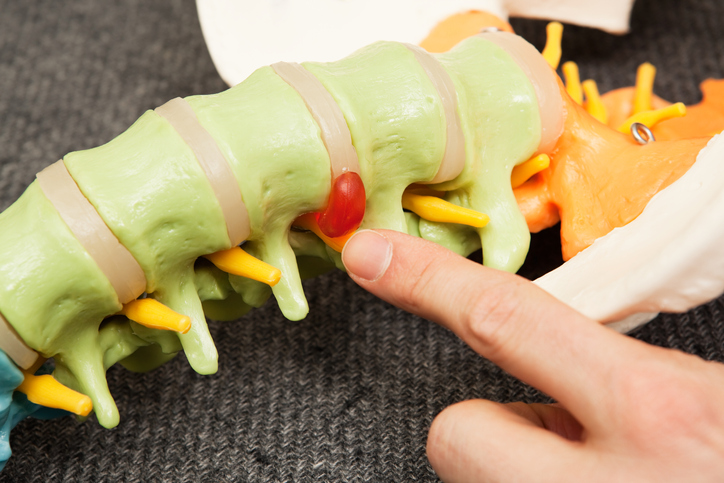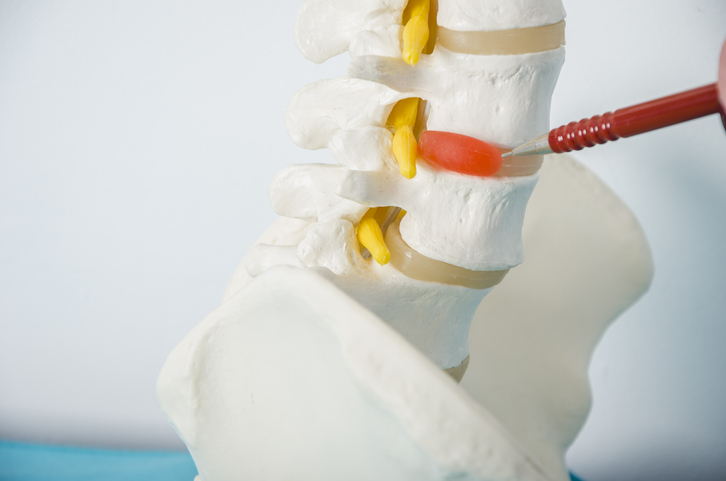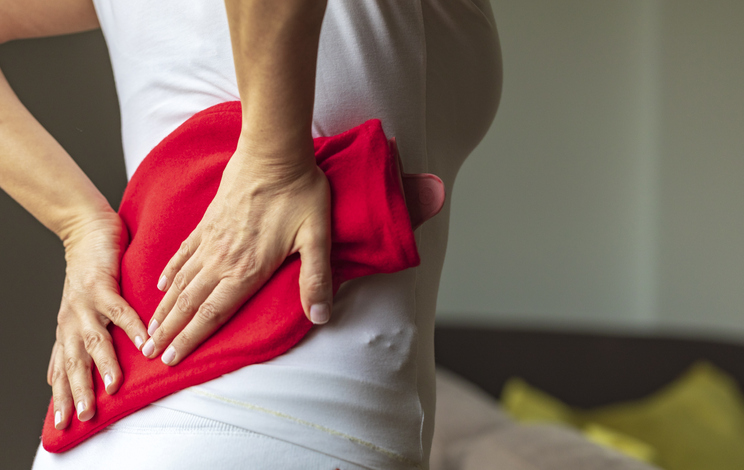Pain
Conventional Treatment Options for Herniated Discs

What is a herniated disc?
Spinal discs are the rubbery cushions that act as shock absorbers between individual spinal vertebrae. As a disc naturally degenerates with age, the soft, jelly-like center of the disc (nucleus) can dehydrate, deteriorate, slip, collapse, protrude, rupture or tear through the tougher, rubbery exterior (annulus). In addition to natural degeneration of the spinal discs, other causes of herniated discs include trauma, a heavy blow to the back, or twisting or turning while lifting a heavy item.
A herniated disc can occur at any point of the spine, but cervical (neck) and lumbar (lower back) spinal discs are most commonly affected. The damaged disc(s) can irritate nearby nerves and cause pain, weakness, numbness, or radiating pain in the legs or arms. The pain typically worsens during physical activity and lessens during rest.
Conventional medical treatments
The medical treatment of a herniated disc is highly individualized and depends on pain severity, specific symptoms, and the initial cause of the herniated disc. The goal of treatment is to relieve pain and other symptoms associated with a herniated disc. A spine specialist can help determine the best treatment or combination of treatments.
Medications
Medication can be used through the first six weeks of discomfort and pain and include the following:
- Over-the-counter pain medications may be recommended for mild to moderate pain. This includes acetaminophen, ibuprofen or naproxen. These medicines can help relieve pain and reduce inflammation; however, they should not be used for more than 10 days unless directed by a health care professional. If pain persists or becomes severe, additional medication may be prescribed.
- Oral steroids may be prescribed to decrease inflammation and relieve pain.
- Muscle relaxers can help if muscle spasms are present.
- Nerve pain medications, such as amitriptyline, duloxetine, gabapentin, pregabalin and tramadol, can help ease pain related to nerve damage.
- Opioid medication may be prescribed for short-term use if other medications fail to relieve pain. Examples include codeine or an oxycodone-acetaminophen combination. Potential side effects of opioids include confusion, constipation, nausea and sedation.
Epidural injection
An epidural injection may be recommended if medications fail to ease the pain. This involves the injection of a corticosteroid and a local anesthetic into the space around the affected spinal nerve to reduce the swelling and pain associated with a herniated disc. A CT scan or X-rays are used to pinpoint the exact location to inject the medication. More than one injection may be needed to reduce inflammation and relieve pain.
Physical therapy
Physical therapy may be prescribed to help reduce pressure on the affected nerve root. A physical therapist can help with stretching exercises, aerobic exercises, massage therapy, temperature therapy, ultrasound therapy, or electrical muscle stimulation. This can help decrease inflammation, reducing pressure on the nerve.
Surgical options
A spine specialist should be consulted if other treatment options do not relieve pain or symptoms worsen. If standing or walking becomes difficult or loss of bowel or bladder control occurs, immediate medical attention should be sought.
Surgical treatment options include the following:
- A discectomy involves the removal of the damaged disk to relieve pressure on the nerves. A surgeon performs a discectomy through the back or the neck.
- A microdiscectomy is a minimally-invasive procedure that involves the insertion of a thin tube through a small incision. A camera is attached to the end of the tube so the surgeon can see and remove the damaged disc. The herniated portion of the disc is removed to provide more space for the nerve root. This lessens the pressure on the nerve root so the healing process can begin.
- A laminotomy involves the partial or full removal of the lamina (the back part of the vertebral bone) from the affected vertebra in order for a surgeon to access the herniated disc. This surgery can relieve nerve pressure and eliminate pain.
- A spinal fusion can be performed after a discectomy or laminotomy in order to fuse together the two vertebrae on each side of the disc. This helps stabilize the spine to stop the bones from moving, preventing pain.
- Artificial disc surgery is an option for specific cases, as only works on certain discs in the lower back. During this procedure, the damaged disc is replaced with one made of plastic or metal. The new disc helps keep the spine stable to improve mobility.


















